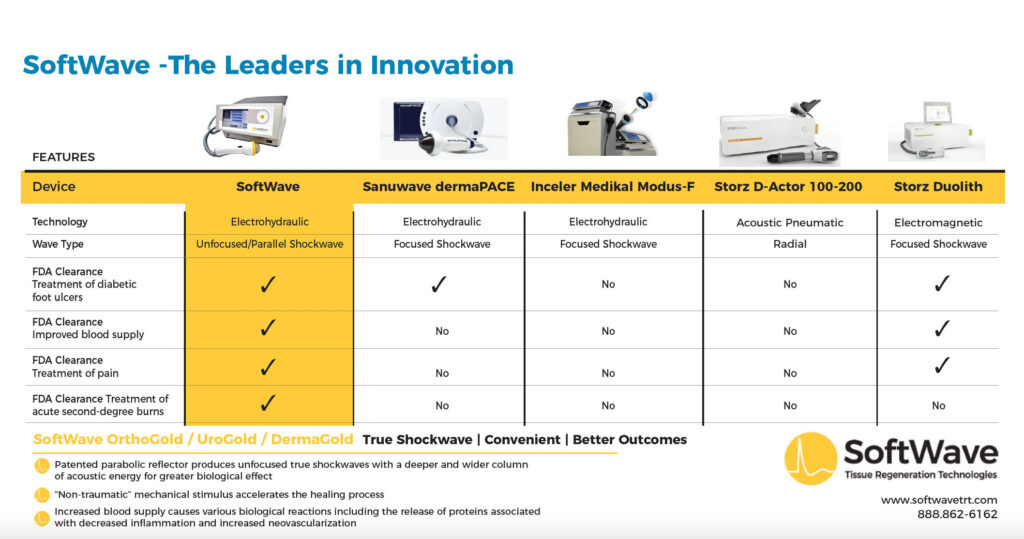Softwave stands out as a unique and innovative device in the market, offering both focused and unfocused shockwaves. This flexibility allows for a comprehensive approach to regenerative medicine. With precise focus technology, it delivers highly effective treatment to specific areas, while using unfocused shockwaves ensures broader coverage for maximum therapeutic benefits.
What sets Softwave apart is its direct delivery of healing energy into your tissue, activating self-repair without inducing micro-trauma. Experience effective and safe healing with Softwave OrthoGold 350 – the ultimate solution for regenerative therapy.


